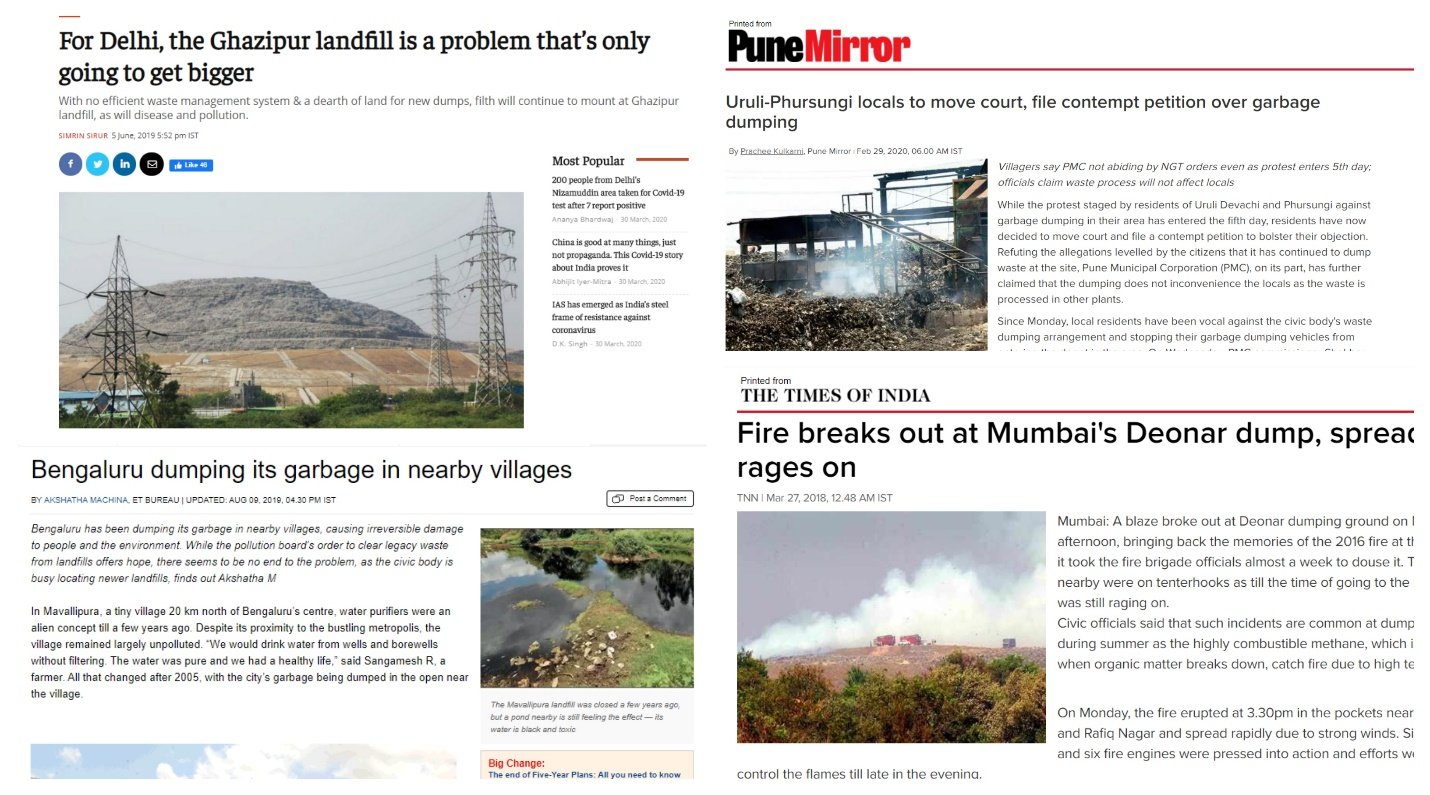In nature, processes are cyclic.

Means there is no end to it. Output of one system serves as input to some other system. That is why there is no “waste” in nature.
While we, humans used natural, biodegradable products, there was not concept of waste in human settlements either.
We used plates made of leaves. We used clothes made of natural fabric. Newspaper, leaves served as packaging material.
We just used to discard it after use and soil used to take care of it. Everything comes from the soil and everything goes back to the soil. This is the “soil-to-soil” principle in nature.
But then, our lifestyle changed.
We started manufacturing materials that nature simply does not know how to decompose. That is called as non-biodegrdable.
And that introduced the concept of “WASTE”.
As you see, it is quite a recent concept. Our ancestors never had to deal with this problem.
Because of our changed lifestyle, our modified living places, we constantly encounter waste. Open any newspaper, and there is news of waste management problem, in some or other city.
Here is a glimpse.

Same is with dry leaves.
For forest, dry leaf is never a problem. Whatever falls on the floor remains there. Shed leaves form a carpet, layer over the soil. This layer remains as it is throughout the summer.

When rains arrive, leaves decompose. Some proportion of nutrients that the tree absorbs from the soil are present in these leaves. These nutrients, when leaves decompose, are returned to the soil.
Soil keeps receiving organic matter and retains its productivity.
If we can follow this process, major challenge of leaf litter management will be solved, isn’t it?
So how do we do that in cities and towns?
Agreed, we cannot keep leaves as it is and let the natural process take place.
In many instances, our premises are tiled/ paved. There is no open soil available.
And how can we keep such a large quantity just heaped in the premises.
I am with you on this. 100%.
But here is my solution. We modify this process a bit. What say?
Instead of letting it happen at nature’s pace, we will change this process as per your convenience and will also speed up this process because we have problem of space.
Don’t worry, we will discuss various methods in detail in the section “Compost”. And in the same section, I will also help you decide which is the most suitable method for you.
In this section we will discuss basic process and principles of composting.
Basically, what we do, is we collect the leaves, decide a convenient space in our premises and carry out composting in that space. And we use something called “culture” which makes this process fast.
To make it simple to understand, I will provide you an example. In India, we use curd frequently. How do we make curd from milk?
We warm the milk. Add half a teaspoon of curd to that milk. And our job is done, right? Curd contains bacteria. Bacteria from that half a teaspoon of curd, multiple and convert the entire milk into curd. What did we do? We just ensured that conditions are right. That is, we ensured temperature of milk is proper for bacteria to live and grow, right?
Composting is exact same process. All the hard work of converting organic matter into compost will be done by mechanical decomposers i.e. various insects and chemical decomposers, i.e. microscopic organisms like bacteria, fungus, protozoa etc.
Here, instead of half a teaspoon of curd, we will be using culture. Role of culture is to provide a dose of bacteria for digestion process to start. This is required only for the first cycle of composting. Just like curd, next time, compost from this first batch will be used as culture for the next batch.
Till we have our own culture, what can we use as culture?
- Soil
Soil contains microorganisms.
Do you know, a spoonful of healthy soil contains more microorganisms than the people on the earth?
Just remember, use healthy soil.
How do you know what is healthy soil? Typically soil under a large tree which receives regular organic matter in form of fallen leaves, which is not directly exposed to harsh sunlight is healthy. Take some soil in hand, it should be loose, crumbly and dark.
Soil that is exposed to sunlight, which does not have any organic matter and where there is a lot of human activity, hardens and gets composted. Microbial activity completely stops in such soils.
- Cow dung
Cow dung and cow urine contains a large quantity of micro-organisms. If you have a cow shed nearby, then it is an ideal culture.
- Buttermilk
Remember, traditionally we drink buttermilk after supper. Ever wondered, why? Because buttermilk contains bacteria that aid in digestion of food.
Bacteria is what we are interested in. So, buttermilk is an ideal culture. However, use it only and only if it is in surplus for some reason.
- Compost borrowed from somebody
If you have a neighbor, a friend who has a compost bin, they you can borrow a small quantity from them as culture to start your composting.
- Compost culture/ Microbe mixture
If none of the above options work, then some ready-made mixtures are available in the market that you can use as culture. Brands may differ as per your area. Best way is to visit any garden supply store in your area and inquire about the same.
What are the required conditions for compost?
Aeration (A), Temperature (T) and Moisture (M) i.e. ATM are the 3 vital factors for composting.
We, in India need not worry about T factor. Sun takes care of it for us, most of the times. In northern India, in the winter, there could be problem for some days when temperatures drop. But not to worry. Process will simply slow down for some time. THAT IS ALL.
We need to take care of aeration and moisture.
Aeration means enough oxygen should be present. If there is too much water in the matter, then all the spaces are filled with water, and there is no room for air. In that case, process turns anaerobic i.e. the decomposing happens in absence of oxygen.
Anerobic digestion is also a natural process. But aerobic bacteria are more efficient than the anaerobic bacteria. Hence, our aim is to keep the process aerobic.
Also, result of anerobic digestion is methane, which has a foul smell. When composting unit starts emitting foul smell, people get scared. Others start complaining about it. And that is where many composting projects fail.
Don’t worry, we will take care of this challenge while designing the composting unit. More on the design in later section.
To ensure moisture in our composting material, we need to water it daily. Just as we water garden plants. Just enough to make leaves moist.
You can create alternate layers of kitchen waste and dry leaves. In that case, you are relieved from daily watering duty. Necessary moisture will be provided by the green component.
If it is only dry leaves, then composting takes a little longer. But not to worry. You will get compost.
Use the ready compost for garden. And see your garden go green on the brown leaves.
HAPPY COMPOSTING!!


